While his cultural and religious background anchors his creative explorations, Thumbiran's unique perception of life makes his work truly shine. In one project we found particularly captivating, he interpreted the 108 names of the Hindu deity, Krishna, connecting these ancient spiritual concepts to everyday individuals in South Africa. By interweaving his personal beliefs with the lives of those around him in this way, Thumbiran's work feels both intimate and universal.
Thumbiran is on a mission to shake up the prevailing art world discourses; it is refreshing to see a young artist embracing his religion and culture so explicitly, and carving out space for other South African Indian creatives to do the same. His work incorporates Hindu iconography, prayers, and rituals. Beyond the striking aesthetics, Thumbiran uses his practice to cultivate a sense of belonging for those who navigate complex cultural spaces that can sometimes feel exclusionary or difficult to fully identify with – all the while sparking vital conversations around identity, culture, and representation in the country.
At the opening of Brahmacarya at Bag Factory, 26 artworks graced the space. Near the entrance, a piece over two metres tall titled Shiv cannot be overlooked: in vibrant colour, it combines multiple Hindu deities into a single form. Another large-scale work depicts Ganesha, the elephant-headed Hindu god of beginnings. Many of the pieces vary in size and symbolism, but are brought together through the technique of mixed-media wheat pasting on wood. For us, the greatest takeaway was witnessing firsthand how Thumbiran's work brings diverse people and ideas together. It also gives a voice to perspectives that are very much a part of the South African experience, but sometimes fly under the radar.
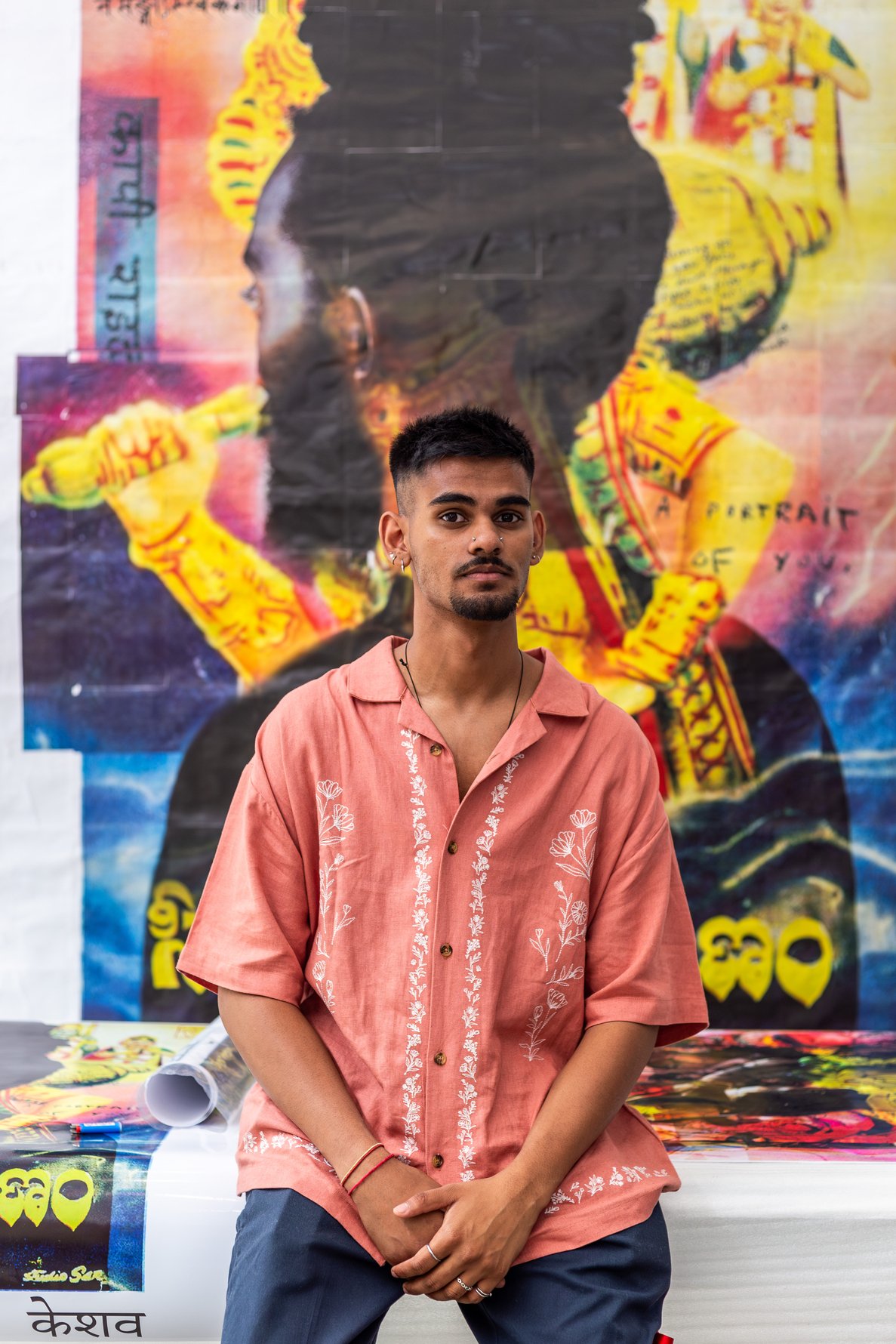
Thumbiran completed his honours in visual art at the University of Johannesburg (UJ) in 2024. Though a relative newcomer to the local art world, he's already developed a unique voice that reflects his layered identity and creative vision. In 2022 and 2023, he was named a Top 100 Finalist in the prestigious Sasol New Signatures Art Competition. When he's not fostering his own practice, Thumbiran spends his time shaping future artists. In 2024, he tutored New Media Studies at UJ, developing his skill in communicating complex ideas. He also works as a photographic first-assistant to a fine art reproduction company, Repro Pictures, that specialises in documenting art and exhibitions for artists, galleries, auction houses, and institutions.
While Lenasia, a suburb south of Soweto, is his home base, the city of Joburg is where Thumbiran’s artistic heart truly beats – a hub of opportunity filled with galleries, artist residencies, and vital platforms for the up-and-coming. It’s also the place where most of his work comes to life. His studies have provided him with a strong sense of comfort and familiarity. For him, Joburg offers "unimaginable possibilities for growth" that empower him to "challenge the world". We caught up with Thumbiran to find out more about his philosophy as an artist and his large-scale works.
The Young/Unframed programme at Bag Factory supports risk and experimentation. Where in this exhibition do you see yourself taking creative risks or stepping into new territory?
The risk emerges most vividly when I push the scale beyond anything I've attempted before: prints towering three metres high, commanding space and attention. These works loom over the viewer, stripping away the luxury of passive observation.
They demand to be seen, to be felt. In those moments, the artwork becomes inescapable – a confrontation, an invocation. Creating at this scale is a leap into the unknown, where every choice is magnified, and every mistake, irreversible. Yet it is in this vastness that the work finds its power, where vulnerability becomes presence, and presence becomes a form of truth.
Since your works often blur boundaries between the physical and the spiritual, what elements in the exhibition feel like a ritual, a memory, or a meditation?
The ritual begins in silence – hours poured into composition, colour, and form, shaping a piece that feels as though it could exist everywhere at once: in time, in memory, in space.
Each work is built with intention, layered with meaning, and crafted into a multidimensional experience. And yet, once complete, I surrender it entirely. There is a sacred forgetting that follows. I release the image, the idea, the medium, even the techniques that succeeded. Each piece becomes a kind of rebirth, a shedding of what was, to make space for what could be.
This constant cycle of creation and release is both discipline and devotion, allowing every new work to arrive unburdened, fresh, and full of possibility for those who encounter it.
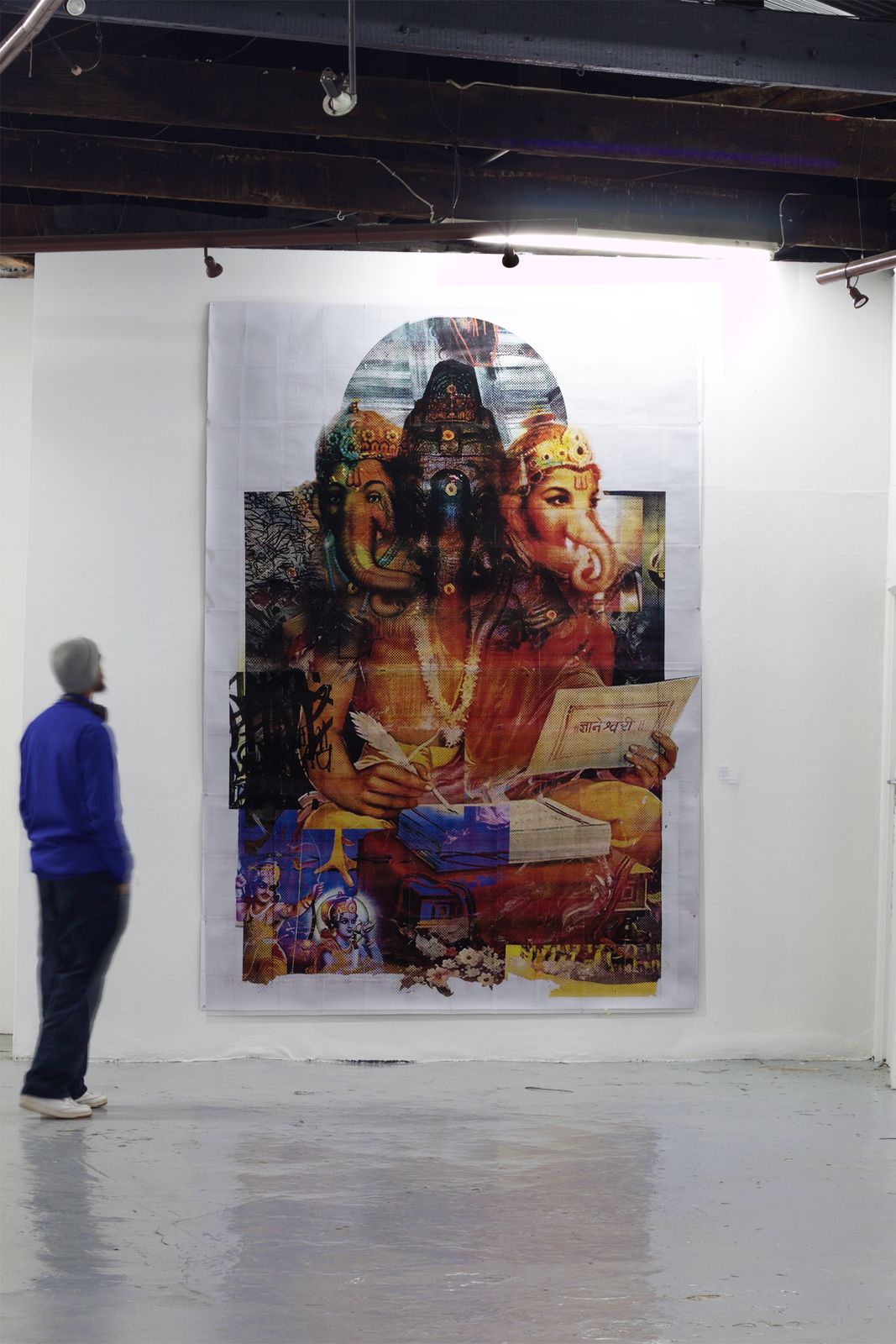
In the Hindu religion, Brahmacarya refers to the first stage of life that's about learning and self-discipline. How do the materials or techniques in these artworks reflect that kind of inner work?
The process of wheat pasting requires immense self-discipline, as even a tiny misalignment of a millimeter can distort an image over three metres, risking the loss of all the work invested. My creative journey began with scanning sketchbooks, grounded in my ongoing exploration of Hinduism. This foundation led me to focus on the theme of stolen and looted sacred murtis [devotional images] in Hinduism, which deepened my connection to my spiritual and cultural identity. Over time, the work evolved further to include reflections on my personal identity and the city of Joburg.
Despite changes in size, medium, and shape, all phases remain interconnected through the underlying influence of Hinduism, which ties together the themes and purpose of my work. This ongoing process has taught me the importance of discipline, adaptability, and continuous learning.
How do you use visual language to express the emotional weight of unlearning? Can you spot moments in your work that feel like letting go?
With my visual language, I often find myself tearing up layers of paint, removing and adding iconography. This process prevents me from becoming too precious about the work and instead gives it the space it needs to grow into something larger than myself.
In one of the two major Sanskrit epics of ancient India, the Mahābhārata, a great war erupts between two families over justice and the right to rule. Arjun, one of the heroes, must fight his beloved uncle and mentor, Bhishma, who sides with injustice. Though torn by love and respect, Arjun fulfills his duty and wounds Bhishma in battle. Bhishma, able to choose his time of death, lies on a bed of arrows, awaiting the right moment to die. It is a powerful, heartbreaking scene about the pain of doing what is right. At the bottom of the image, the brothers stand over their fallen uncle – a sorrowful moment of love, loss, and the weight of duty.
On a personal level, I have also faced the painful reality of letting go. My own uncle passed away suddenly. He was a pillar of strength and a constant supporter of my artistic journey. Like Arjun, I have had to come to terms with my duty, regardless of grief, regardless of how painful it is. I continue to create, knowing that art is my path, and that honouring his memory means moving forward with purpose. Whether or not anyone sees this work, praises it, or purchases it is no longer my concern. My role as an artist is to create, to explore, and to challenge. The rest is out of my hands.

If Brahmacarya is about preparing for a meaningful life, what kind of future do these artworks seem to be preparing for – or warning against?
These works challenge what is traditionally accepted in the art world. They raise critical questions: How many South African Indian artists are widely known? How many truly engage with Hinduism, not as a surface-level motif for mass appeal, but as a lived, spiritual, and cultural truth? My work puts Hinduism at the forefront – not diluted, not hidden. It’s a commitment. If you search "Hindu artwork," you will not find anything like what I’ve created.
These pieces are meant for galleries ready to break patterns of repetition, institutions willing to reimagine what belongs on their walls. But they also belong in spaces where people from all walks of life can engage with them, because the scale demands it. Towering and unignorable, they ask to be witnessed. I hope these works reach as many people as possible, challenging and reshaping the discourse around South African Indian art history, and expanding the possibilities for what is still to come.
How do your personal questions about why people seek help from higher powers, like religion, shape your work?
I'm not asking anyone to seek higher powers or convert to Hinduism. This work isn’t about persuasion or preaching. Instead, I’m offering a possibility – one of many – that viewers can choose to engage with or simply observe. Hinduism, in my work, is not a demand but a lens. A lived perspective. I am not forcing belief, but inviting thought. These works exist to open up new spaces for reflection, for conversation, and for expanding what art can hold: spiritually, culturally, and historically.

Rapid-fire round: Four questions about Joburg
The most memorable meal you have eaten in Joburg?
Samosas at World of Samoosas at Oriental Plaza.
One song on your playlist that is either about Joburg or makes you think about this city?
Fairytale by Liquideep.
Your favourite Joburg suburb and why?
Lenasia, due to its deep connection with Hindu temples, it's music and culture. It also provides a space of unity amongst many colours of people.
Three words that describe this city.
Complex, evolving and adaptable.


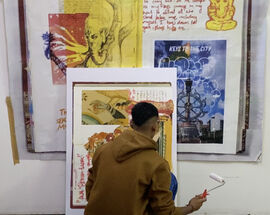
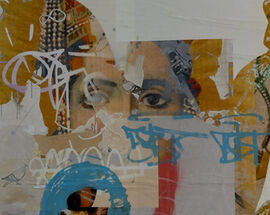
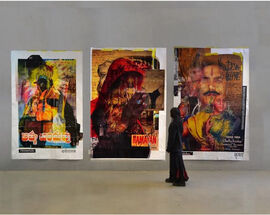


Comments